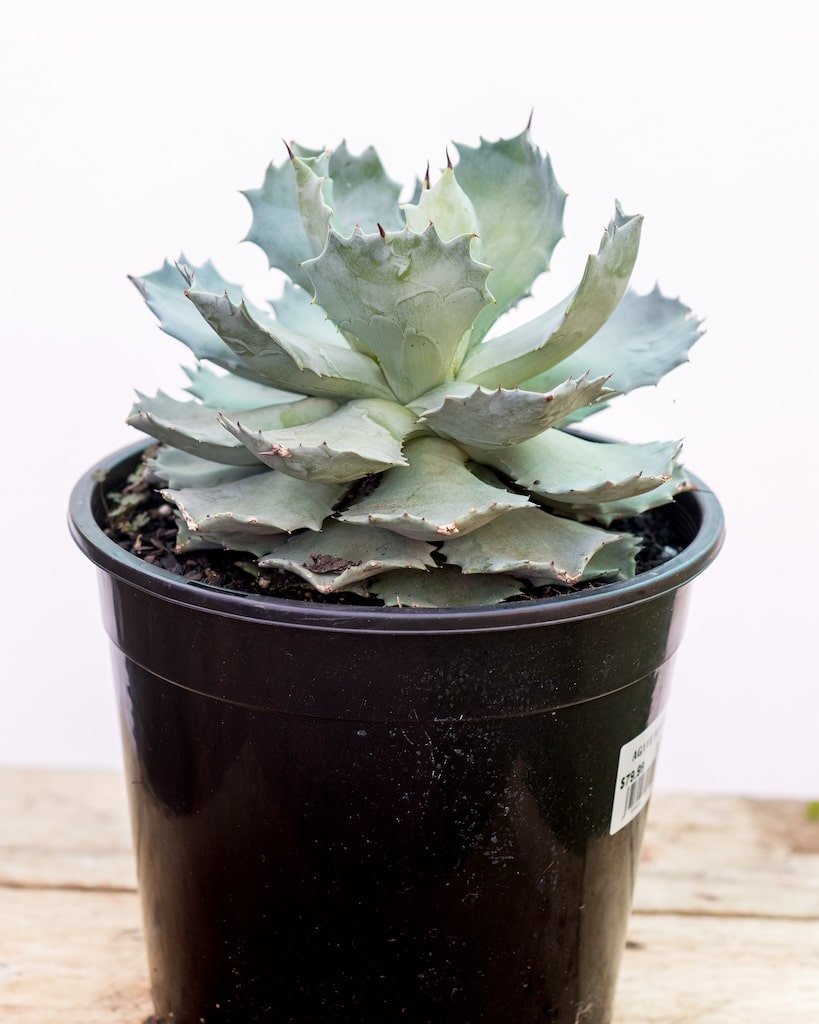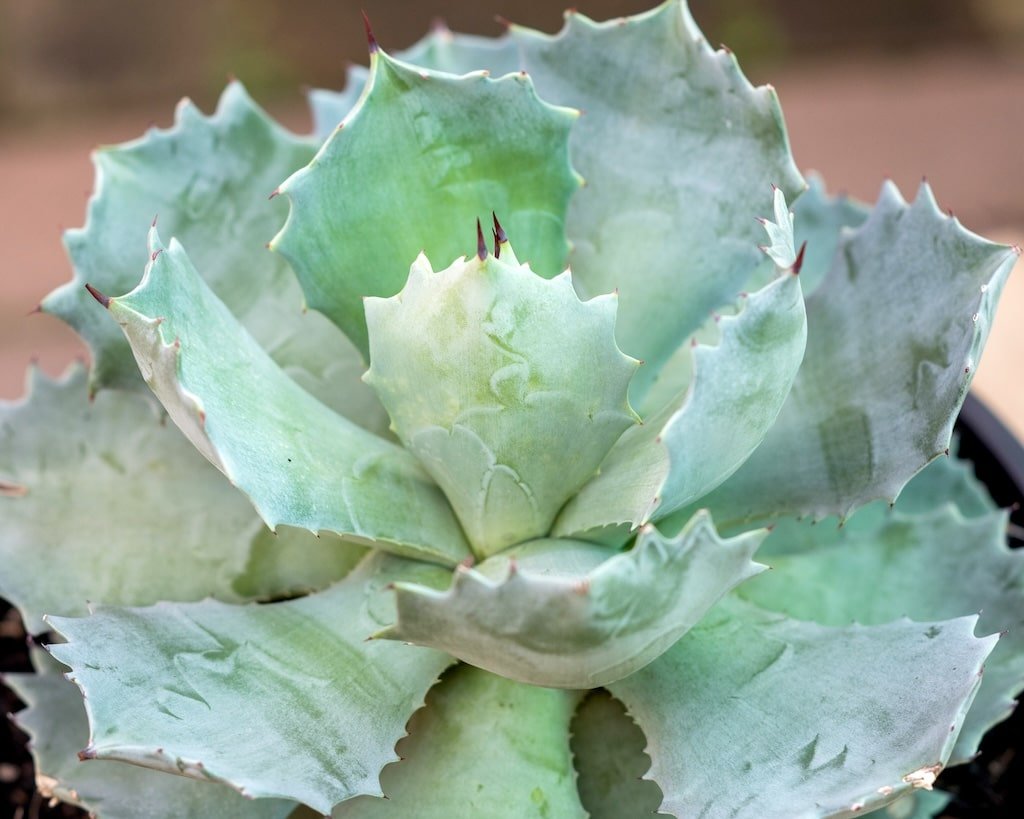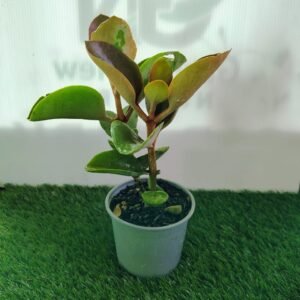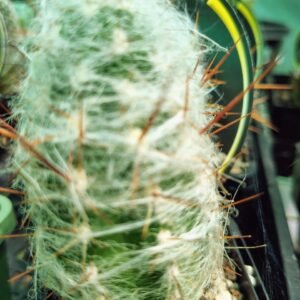The Agave potatorum, also known as the Dwarf Century Plant, is a striking and highly sought-after succulent for its beautiful, compact form. This is a tough, architectural plant that forms a dense, symmetrical rosette of broad, spoon-shaped leaves. The leaves are a gorgeous powdery blue-grey colour, often with a white or pale blue outline. The margins are adorned with distinctive, sharp, reddish-brown or black teeth, and the tips end in a formidable spine. Its smaller size and stunning appearance make it a fantastic choice for a range of garden settings.
Caring for Your Agave potatorum
- Growing Conditions: This agave thrives in a spot with plenty of sun. Full sun is best to bring out the richest colours and most compact form. It’s incredibly drought-tolerant and can handle a wide range of temperatures. It needs extremely well-draining soil—a cactus or succulent mix is perfect—as it’s highly susceptible to root rot.
- Watering: Like most agaves, it is very sensitive to overwatering. Water it sparingly, allowing the soil to dry out completely between waterings. The plant’s plump leaves are an excellent indicator of its water storage.
- Feeding: This plant isn’t a heavy feeder. A light application of a slow-release fertiliser for succulents in early spring is all it needs to stay happy.
- Pruning: Pruning is simple. Just remove any dead or spent leaves at the base to keep the plant looking tidy. This agave will die after it flowers (a rare event), but it usually produces “pups” or offsets that can be removed and replanted to create new plants.
Usage in the Garden
The Agave potatorum is a versatile plant that makes a big impact despite its smaller size. Its bold, structural form and unique colours make it a brilliant feature plant in a succulent garden, a rockery, or a dry, arid-style landscape. It looks sensational as a standalone specimen in a pot or bowl on a patio, and its compact habit means it’s perfect for small gardens and courtyards.










